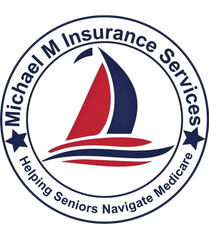What you need to know before making the move in 2026
Many people start out in a Medicare Advantage plan because the low premiums and extra perks look attractive. But after a few years, some realize they’d rather have the freedom and
predictability of Original Medicare plus a Supplement (Medigap) policy.
If you’ve been thinking about switching back, here’s what you should know.
It’s common for beneficiaries to re-think their choice after a few years. Some reasons include:
- Network frustrations — doctors or hospitals you want aren’t covered.
- Prior authorizations —needing plan approval for tests, procedures, or even prescriptions.
- High out-of-pocket costs — Advantage plans cap expenses, but the MOOP in 2026 is still $9,250
MEDICARE COST SHARE 2026
A bad health year can make costs add up quickly. - Benefit changes — Advantage plans can change coverage, networks, or drug formularies every year.
- Desire for stability — Supplements don’t change benefits annually, and you can see any doctor who accepts Medicare.
Why People Consider Leaving Medicare Advantage
Know Your State
One of the most important factors in switching back to a Supplement is where you live .
- Some states (like New York, Connecticut, and a few others) have guaranteed issue protections — meaning you can apply for a Supplement at any time without answering health questions. In those states, the transition from Advantage back to Medigap is much easier.
- Most states however, require medical underwriting if you apply for a Supplement outside your initial enrollment period or without a special right. This means the insurance company can:
- Ask about your health history
- Charge higher premiums
- Exclude coverage for certain conditions
- Or, in some cases, decline your application
Exceptions to Know:
- If you’re in your first year of trying a Medicare Advantage plan , you have a “trial right” to switch back to Original Medicare and buy a Supplement without underwriting.
- A few states have special rules, such as limited open enrollment windows each year where underwriting is waived.
Bottom line: Before switching, know your state’s rules. In guaranteed issue states, your
options are wide open. In others, health conditions may limit your choices or make premiums higher.
Steps to Take If You’re Considering Switching
- Check your eligibility — Find out if you qualify for a guaranteed issue right in your state.
- Apply for a Supplement before dropping Advantage — Don’t leave your plan until you’re approved.
- Compare Supplement options — Plan G and High Deductible G are the most popular in 2026, with Plan N also growing in interest.
- Review prescription coverage — If you leave Advantage, you’ll need to add a stand-alone Part D drug plan.
Costs to Keep in Mind
- Medicare Advantage: Often $0–$50/month premiums, but with cost-sharing for services and a cap at $9,250 in 2026.
- Medigap + Part D: Higher monthly premiums, but much lower out-of-pocket costs when you need care.
Example: Someone with frequent specialist visits and a hospitalization may find Medigap’s
higher premiums worth it because their out-of-pocket costs are nearly eliminated.
Key Takeaway
Switching from Medicare Advantage back to a Supplement can be the right move if you want
stability, nationwide access, and predictable costs. But it’s not always easy — medical underwriting and state rules matter.
Before making a move, the safest step is to talk with your broker. They can check your eligibility, review plan costs, and guide you through the application process so you don’t lose coverage.
Part D Stand-Alone vs. Medicare Advantage Drug Coverage
Which option makes more sense in 2026?
Prescription drug costs are one of the biggest concerns for Medicare beneficiaries. You have two main ways to get drug coverage:
- A stand-alone Part D plan (used with Original Medicare, with or without a Supplement)
- Prescription drug coverage bundled into a Medicare Advantage plan (MAPD)
At first glance, they may look similar, but there are important differences. Let’s break it down.
Stand-Alone Part D (With Original Medicare)
If you stay with Original Medicare, you’ll likely need to buy a separate Part D plan for prescriptions.
What You Pay in 2026
- Deductible: Up to $615 (up from $590 in 2025)
MEDICARE COST SHARE 2026 - Out-of-Pocket Cap: $2,100 annually for covered drugs (slightly higher than 2025’s $2,000)
MEDICARE COST SHARE 2026 - Average Premium: $34.50/month, down from $38.31 in 2025
MEDICARE COST SHARE 2026 - Insulin: No more than $35/month (or 25% of negotiated price, whichever is less)
MEDICARE COST SHARE 2026
Pros
- Freedom to pair with any doctor coverage. Works alongside Medigap for broad provider access.
- Flexibility in choosing your drug plan. You can select based on your prescriptions and preferred pharmacies.
Cons
- Separate policy to manage. You’ll have Medicare + Supplement + Part D, which can be three different bills.
- May cost more than Advantage drug coverage.Depending on your meds, premiums plus copays can add up.

